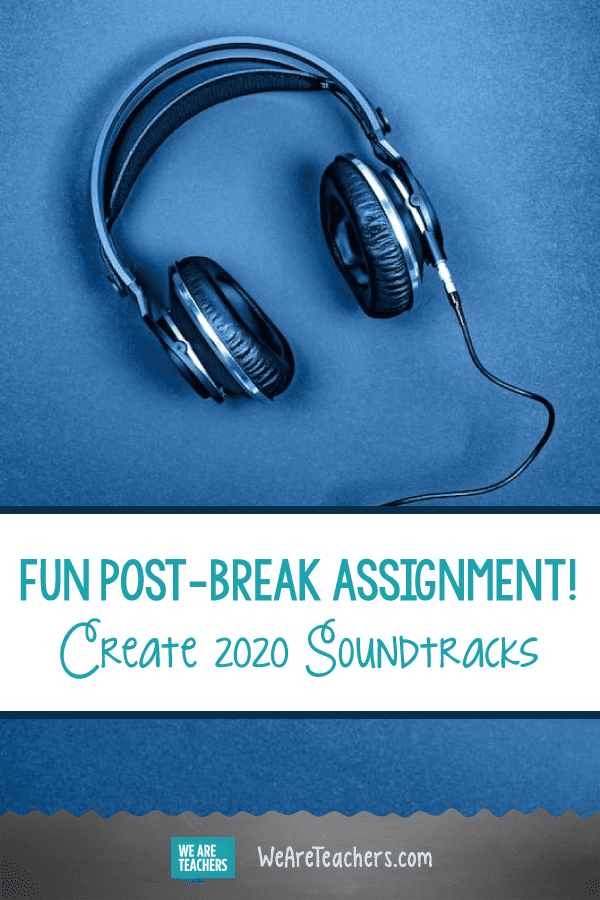As a typical type A teacher, nothing excites me more than setting short and long term goals to check off a list: sweeeeet satisfaction! My students, on the other hand, often find traditional goal setting activities boring and onerous.
Bottom line—if goal setting isn’t fun and engaging, students aren’t going to follow through with the goals they’ve set. Lesson fail.
This January, ditch your traditional goal setting worksheet and instead have your students create 2020 soundtracks that they can listen to all year long!
Step 1: Set goals
A mini lesson on S.M.A.R.T. goals is a great place to start. Many students will already have an understanding of what S.M.A.R.T. goals are and how to set them, but a refresher is great for everyone.
Next, encourage students to set both 3-5 short and 3-5 long term S.M.A.R.T. goals related to different aspects of their lives (home, school, social, extracurricular, future career).
Many students will need practical examples to help them in creating their own goals, so brainstorming potential ideas in each of these categories via a small group or whole class brainstorming session is an important step in this process. It will also allow you to sneak in some oral communication formative assessment!
Teachers should also be active participants in this process, sharing and talking through the process of modeling how and why they are selecting their own 3-5 short and 3-5 long term goals.
Step 2: Pair with music
Once students have selected their goals, the fun with music begins! Their task is to pair each of their goals with a song that they feels reminds them of that goal or connects to it in some way.
Many students have iTunes accounts to access music, but Spotify is another free app students can use if they don’t already have their own digital music account.
Students should also be challenged to organize their songs in a logical order. For example, perhaps all their short term goals first, then long term goals or grouping goals/songs together that focus on certain areas of their life (home, school, social, extracurricular, future career).
ELA teachers could also choose to sneak in a lesson here regarding simple and complex connections to texts (songs), as well as the difference between literal and metaphorical meaning if it is grade appropriate for students.
Again, teachers should model and verbalize why they are choosing certain songs for their goals, as well as why/how they are organizing their order to support students in their own task.
Step 3: Share and explain
Once the 2020 soundtracks are set, encourage students to share their playlists with their peers and teacher, as well as explain their goal and song connections.
Students could share their work via a presentation, in a small group, through a teacher conference or simply submit a written discussion with their playlist.
Teachers can also frame submissions based on a particular skill they’d like to assess (i.e. oral communication, writing, media, etc.) As an ELA teacher, the sky’s the limit in terms of how you can frame a topic or activity to suit your curriculum, so be creative as well as calculative regarding how you’d like students to share their work.
Step 4: Listen all year long
Once the soundtracks have been shared and interpreted, encourage students to listen to their soundtracks all year long to remind them of the short and long term goals they’ve set for themselves.
Hopefully, they’ll have all chosen music they love so this task won’t be too much to ask!
A couple other twists to keep this activity going long term would be to select one student’s soundtrack to listen to in class each Friday as a special treat during work time, or to schedule conferences with students later in the school year to check up on their goal setting success or lack thereof, as well as how often they are listening to their playlists. Happy goal setting!
If your class creates 2020 soundtracks, we’d love to hear about it! Come and share in our WeAreTeachers HELPLINE group on Facebook.
Plus, books about winter to share with your class.

